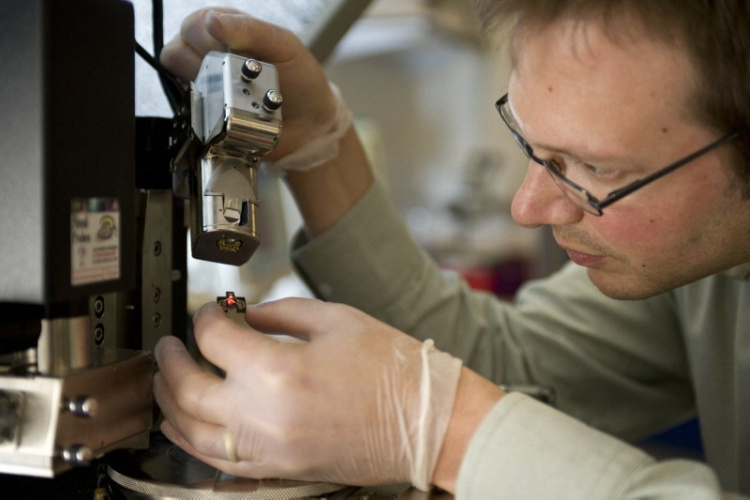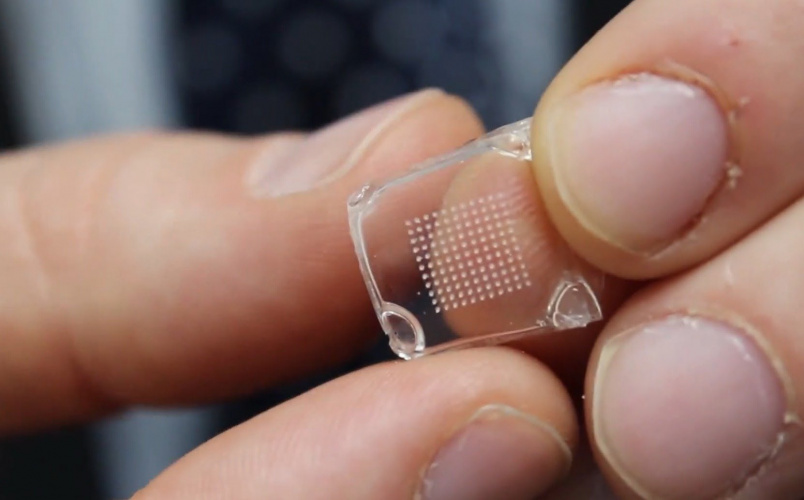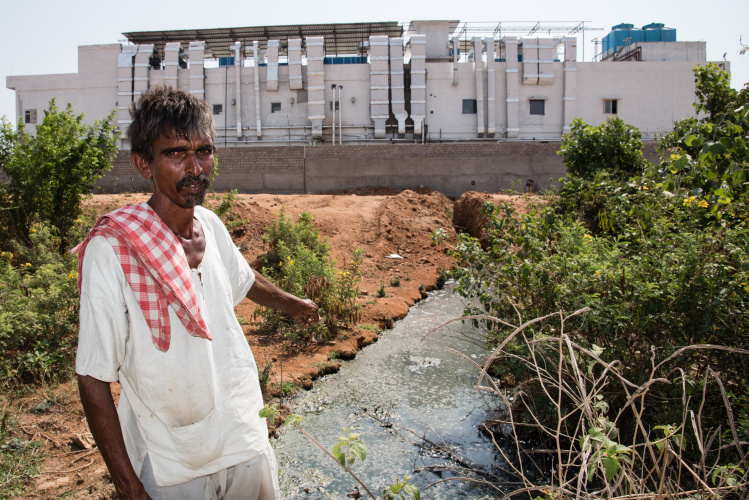
From organ transplantation and stem cell therapy to surgical robots and advanced prosthetics we live in an age of medical marvels: where once fatal diseases have been eradicated and cures to some of humanity’s most devastating illnesses lie within reach.
And yet, around the world experts are increasingly concerned that we stand on the brink of a dark age of medicine, where once common diseases become untreatable and routine medical procedures become a matter of life and death.
It is feared that the astonishing progress of the last century could unravel in the face of the growing problem of antimicrobial resistance (AMR): the ability of microbes such as bacteria to resist the drugs - in particular antibiotics - that have underpinned many of the healthcare advances we take for granted.
According to the World Health Organisation, an estimated 700,000 people every year now die from drug resistant diseases, and this figure is projected to grow rapidly. The UK government’s 2014 O’Neill Review, carried out by British economist Lord Jim O’Neill, warns of a post antibiotic apocalypse that could kill 10 million people a year by 2050; force up to 24 million into extreme poverty; and devastate the global economy.
"There is no legislation on what is an acceptable level of antibiotics in water systems"
The most frequent response to this crisis is a call for new drugs, in particular new antibiotics. But whilst replenishing the pipeline of treatments is vital, it’s only one part of the solution to a mind-bogglingly complex problem.
COMMENT: Former chief Medical officer Prof Dame Sally Davies on the AMR challenge
Whilst resistance is to some extent a naturally occurring phenomenon, the increasing use of antibiotics since the second half of the 20th century has helped to create the perfect breeding ground for resistant microbes; with antibiotics from healthcare, agriculture and drug manufacturing entering the environment, killing off non-resistant strains of bacteria and leaving resistant strains to flourish.
There’s now a growing consensus that getting to grips with AMR requires not just new drugs, but a fundamental rethink on the way we manufacture, use and handle antimicrobials; the measures we take to control their release into the wider environment; and the way we think about infection control and disease prevention.
As the government’s outgoing chief medical officer Prof Dame Sally Davies writes here it’s a battle that must be fought on many fronts: requiring a global, multidisciplinary push on an unprecedented scale. And it’s a battle in which engineers are playing an increasingly important role.
Perhaps the best-known contributor to AMR is the enormous over prescription of antibiotics.
In a landmark 2018 study, public health England examined more than 3.5 million UK prescriptions and concluded that almost a quarter of them were potentially unnecessary. A 2019 University of Michigan study sifted through 15 million prescriptions and came to the same conclusion.
Clearly, reducing these percentages could have a major impact, and Leeds University’s Prof Christoph Wälti is one of a number of engineers developing technology aimed at achieving just that.

“Part of the AMR problem is that there’s a massive over prescription of antibiotics,” he told The Engineer. “Simply reducing the number of unnecessary prescriptions would have a positive impact on the non-occurrence of resistance.”
Wälti and his team are developing a disposable electronic device that could be used by GPs and nurses to rapidly determine whether a patient is suffering from a viral or bacterial infection and help them decide whether or not to prescribe antibiotics.
The device works by detecting the presence of biomarkers (such as C-reactive protein) that are produced when the body has an infection. Whilst there are already some point-of-care technologies that flag individual biomarkers, Wälti’s technology differs in that it can detect a number of these tell-tale substances thereby providing a much more reliable indication of what’s going on.
The system is effectively an electronic biosensor with a microfluidic sample handling stage that applies a blood sample to a series of “pins” optimised to detect five different biomarkers.
Whilst the underpinning technology is complex, and has required the involvement of experts from a variety of disciplines, a key element of its design is that it’s exceptionally easy to use. “We have a panel of advisors including GPs and pharmacists,” said Wälti, “one very clear message is that if they want to have a chance of being able to use something like this it has to be simple.”
Walti’s team is currently running preclinical trials with patient samples in order to evaluate the approach and hopes to soon run trials in GP surgeries, where the system will be evaluated alongside standard processes.
Whilst Wälti’s technology is effectively a yes or no test aimed at establishing whether or not there’s a bacterial infection, Glasgow University biomedical engineer Dr Melanie Jimenez, is working on systems that could help clinicians identify specific pathogens more rapidly.
Currently, in order to identify a specific bacterium, clinicians will culture bacteria from blood samples, which can take days. During this interim period the patient is typically treated with broad-spectrum antibiotics, which can contribute to the development and spread of resistance.
Jimenez is attempting to fast-track this process by engineering a culture-free alternative that uses micrometre-scale channels to precisely control fluids and cells and separate pathogens from patient blood samples within minutes. “We design these channels to isolate pathogens based on different parameters such as their morphological or mechanical properties but also specific molecular patterns,” she explained.
Once the pathogen has been isolated, existing identification techniques can be used to identify it, and ensure the right antibiotic is used.
Alongside improved diagnostic tools, engineers are also exploring new methods of drug delivery that could optimise the impact of prescribed drugs and limit the chances of them being exposed to conditions that encourage resistance.

One such effort is being led by Professor Ryan Donnelly of Queens University, Belfast, who is working on a skin patch that painlessly administers drugs directly into the bloodstream through thousands of individual “microneedles”
“One of the biggest problems is that the huge majority of the drugs are taken orally,” said Donnelly. “This means that a small quantity of the compound often finds its way into the colon, creating the perfect breeding ground for drug-resistant bacteria.”
Donnelley believes that his patches could provide a solution. “If we are successful, this approach will significantly extend the lifespan of existing antibiotics, allowing time for development of the next generation of antibiotics,” he said.
Assuming they make their way to market sooner rather than later, such technologies will play an important role in the fight against AMR, but they only address part of the problem.
"Everyone has a role to play in the fight against AMR - a global multisectoral approach is key"
One of the biggest causes of AMR is the widespread contamination of the broader environment with antibiotics from human and animal waste, and pharmaceutical manufacturing processes. By repeatedly dosing our environment in this way, we have unwittingly shifted the genetic balance of the natural world, increasing the proportion of resistant superbugs.
Earlier this year, in the first ever global study of its kind, a University of York led team looked at levels of commonly used antibiotics in rivers in 72 countries across six continents and found antibiotics at 65 per cent of locations analysed. In some places levels exceeded safe limits by 300 per cent.
Closer to home, research carried out by a group at London’s UCL found that many of Central London’s freshwater sources contain high levels of antibiotic resistant genes. The worst afflicted was the Thames which contained genes providing resistance for bacteria to common antibiotics such as penicillin, erythromycin and tetracycline.
Dr Lena Ciric from UCL’s Department of Civil, Environmental and Geomatic Engineering, who led this research, said that it points clearly to the need for water treatment methods for antibiotic removal.
Ciric and her team have been exploring a number of techniques that could be used for this including a modification to the slow sand filtration method that is already widely used for water treatment.
But despite showing great promise, Ciric said that the big challenge is ensuring that effective techniques are deployed at scale. And that will require fundamental changes to the global legislation governing the levels of antibiotics in water systems. “There is currently no legislation on what is an acceptable level of antibiotics in water systems, whether it’s drinking water or what waste-water plants are discharging,” she said.
A global legal push will be particularly important if we are to address what is arguably the sharp end of the AMR pollution problem: untreated waste from antibiotic manufacturing facilities in China and India.
There is growing evidence that these facilities, which produce much of the world’s antibiotics, are contributing to the creation of superbug hotspots that could have potentially disastrous global consequences.

“Superbugs In the Supply Chain” a 2016 report published by campaigning group Changing Markets found high levels of drug resistant bacteria close to multiple antibiotic production sites in India.
The samples, which were collected by investigative agency Ecostorm and analysed by Cambridge University biologist Dr Mark Holmes uncovered antibiotic resistant bacteria at 16 of 34 sites. At four of these sites, resistance to three major classes of antibiotics was detected, including so-called antibiotics of ‘last resort’, those used to treat infections that fail to respond to all other medicines.
Clearly, addressing this is a daunting challenge, but UCL’s Ciric points to a growing global appetite to get to grips with the problem. “Globally there’s a real push to ensure that we work internationally and collaborate and make sure we try to deal with the problem on a global scale and It needs to be a global effort. Somebody might get an infection in one country, come to a hospital in the UK and spread it here.”
One of the people at the forefront of driving a more globally focused approach is Professor Timothy Leighton, founder of NAMRIP (Global Network for Anti-Microbial Resistance and Infection Prevention), an organisation established to encourage multidisciplinary, international collaboration on AMR.
Leighton, a professor of ultrasonics and underwater acoustics at the University of Southampton, believes that in our efforts to address the problem we’ve become too focused on particular areas of expertise and that researchers are in danger of missing the bigger picture.
Addressing AMR, he said, requires a fundamentally different approach, one that considers factors ranging from cleaning regimes in UK hospitals right through to the way in which the farming practices in parts of Asia are influenced by theology or the even the behavior of local warlords.
According to Leighton, getting to grips with the complexity and scale of the problem requires specialists of every discipline - geographers, engineers, biologists, clinicians, etc. - to work together. “If you’re going to make a societal change with your AMR work this big picture is critical,” he said.
NAMRIP’s cross-disciplinary approach has, he said, already achieved some notable successes.
One example relates to Leighton’s celebrated work on the development of ultrasonic cleaning technology.
Back in 2015, his research group demonstrated StarStream, a handheld device that induces tiny bubbles that deliver an antimicrobial scrubbing effect into streams of water. He is now in the process of a commercialising a suite of products through the company Sloan Water Technology , and will be supplying ultrasonic devices to sterile services departments at a number of NHS hospitals over the course of the next year.
Another notable NAMRIP project brought together a multidisciplinary team of engineers, microbiologists, chemists and geographers in effort to raise awareness of the way that contaminants are transmitted around a hospital.
Chemists in the group created transparent gels that mimicked the stickiness of three key bugs - MRSA, E.coli and Pseudomonas - and which glowed different colours under a UV light.
The group then hired a hospital ward, complete with real nursing staff, and patients in the form of shop dummies. These dummies were dosed up with the gels in the areas of the body where the bacteria would be expected to occur, and the nurses were encouraged to treat them as they would normal patients.
In order to track the movements of contaminants around the ward the whole process was filmed under UV cameras. The results provide a shocking illustration of the ways in which germs are unwittingly transferred around a hospital setting. “ For instance, if the nurse came along, pulled the curtains around the bed, put on gloves, touched the patient and then reached up to pull back the curtain we were able to note how contaminants built up on the curtain over time,” explained Leighton.
Whilst such projects illustrate the benefits of a more joined up approach, Leighton believes that what’s now required is a fundamental change to the way research is funded, and that the research councils are too hung up on pushing funding into specific silos. “We have to have a much more joined up way of thinking about how we support research,” he said, “The kind of research that you want to fund, i.e. multidisciplinary stuff that is groundbreaking but also proven through translation, doesn’t get funded.”
Despite the frustrations however, there does at least to appear be a growing acceptance that collaboration is critical. “Everyone has a role to play in the fight against AMR “and a global, multisectoral approach is key,” said Glasgow’s Dr Jimenez. “Engineers need to be involved in discussions with stakeholders to identify a path of technological innovations to protect humans, animals and our environment from this growing threat.”
It remains to be seen whether this growing understanding blossoms into the kind of effort required to avert the global medical crisis many are anticipating.




Red Bull makes hydrogen fuel cell play with AVL
Surely EVs are the best solution for motor sports and for weight / performance dispense with the battery altogether by introducing paired conductors...